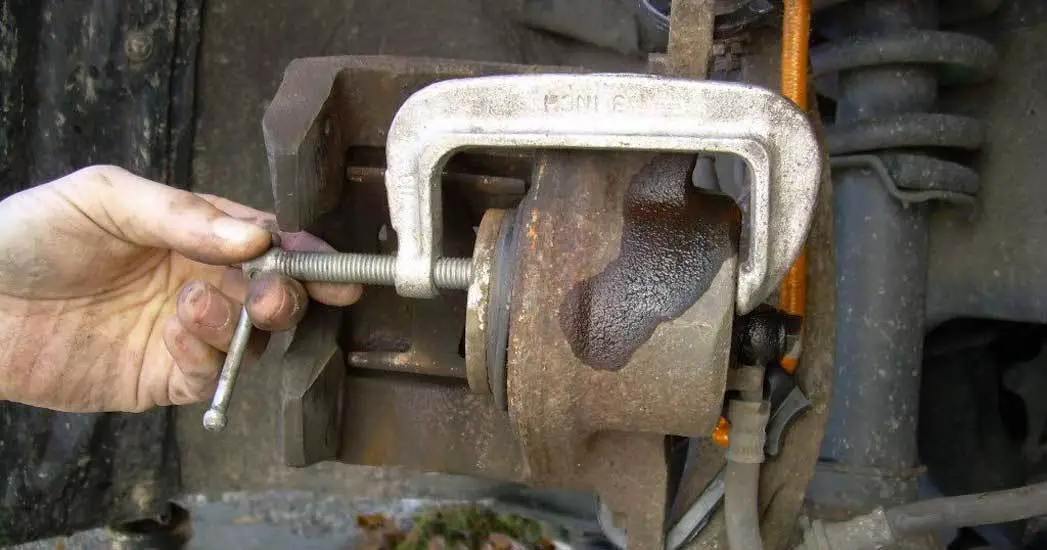The Best Way to Compress a Brake Caliper Using a C Clamp
Are you a vehicle owner? Have you faced a situation where your brakes were not releasing fully? This happens when you remove your feet from the pedal.
Not only that, your car might go in a different direction while you put on the brake. This kind of situation is hazardous and harmful for both the safety of your car and even yourself.
However, this is a clear sign that your vehicle is going through the brake caliper compression problem. Thus, following the article, you will find out all the information about fixing this kind of uncertain problem. Read on to find out more.
Brake Caliper Is Not Compressing: Why?
There are various reasons regarding this situation. Three prime reasons are being discussed below. Check it out.
1. Caliper Bolts Coming Apart
If you check the caliper bolts, you will find slides in it, and that needs to be lubricated. Shielding rubber boots in the slides mainly intact the lubrication. Unfortunately, these boots get ripped apart when new brake pads are installed. Hence, this forces the bolts to come apart.
2. Pistons Getting Sticky
When you apply the brakes, the seal of the brake piston gets out of shape. During the time you let go of it, the seal uncoils automatically. This helps the piston to get compressed. If it doesn’t slide onto the seals, the seal will prevent it from compressing permanently.
3. Vehicle Immobility
If you are not using your vehicle for a long time, the brake caliper might rust with time. This rust will prevent the caliper from not compressing to its full extent. In this case, you might face a problem if you start driving.

Compress Brake Caliper Using C Clamp
If you look at the inside portion of the brake caliper, you will see a piston (cylindrical). The piston is flexible equipment, so it surely has adjusted itself with your old brake pad.
Therefore, before you start compressing the caliper, you should readjust the cylinder to its original position and the new brake pads. Adjust it over the brake rotor.
Accordingly, there is a brake fluid reservoir, and you should remove the cap that covers it. Don’t forget to do this step. If you don’t, you will face huge pressure of brake fluid during the time you start compressing the caliper.
Take the C Clamp and position the end against the piston and over the caliper. Adjust the screw on top of it. Use wood to shield the surface of your piston. Start turning the screw and do it gently. This turning will increase the pressure and compress the piston according to your requirements.
Tighten the area steadily until you get the chance to insert the new pads onto the caliper. Then, connect the caliper and the brake pads over the brake rotor.
You have now completed the task of compressing the brake caliper with a C clamp. Re-cap the brake fluid reservoir to avoid any dirt from coming in contact with it.
Some Tips
- Clean the piston before you start your work.
- For better compression of the brake caliper, you can add some amount of grease onto it.
- If you are seeing that the piston is showing no resistance while compressing, take a step back. You have to use a special tool known as a brake caliper tool in this situation.
- You can purchase the brake caliper tool like c clamp from hardware stores or any website that sells it. If you are interested in using it temporarily, borrow it from your family or neighbors if they have one.
- Make sure the cap of the brake fluid is locked tightly. Water or dirt might touch the liquid out of the blue and will create additional problems. So, to solve this, you will have to provide extra time and effort, unfortunately.
- If you can’t slip the brake pads with your hand, take help from the hammer. Hit it gently and slowly and then replace the pins or bolts that are holding them.
- Try akebono brakes and check whether it is feeling right to you or not. Find out the faults, if it does not fit with your requirement.
- Go out on a test drive after you are done putting all the vehicle parts in its usual place.
How to Compress Brake Caliper with C Clamp
Conclusion
By now, you are probably confident about the answer to the question ‘How to compress brake caliper with C clamp’? If you are still feeling that this kind of problem is challenging for you, take help from an experienced mechanic. They will make sure that you get the best guidance possible.Best of luck!
